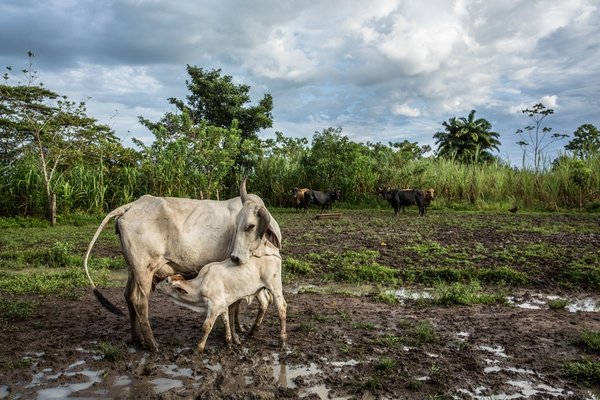 Read this article in French
Read this article in French- Share this article
- Subscribe to our newsletter
Diversified farming benefits people and the environment
Agricultural simplification continues to expand at the expense of more diverse forms of agriculture. This simplification, for example in the form of intensively managed monocultures, poses a risk to keeping the world within safe and just Earth system boundaries. A team of international scientists, led by the University of Copenhagen in Denmark and the University of Hohenheim in Germany, estimated how agricultural diversification simultaneously affects social and environmental outcomes. Drawing from 24 studies in eleven countries across 2,655 farms, the researchers show how five diversification strategies focusing on livestock, crops, soils, non-crop plantings and water conservation benefit social (e.g. human well-being, yields and food security) and environmental (e.g. biodiversity, ecosystem services and reduced environmental externalities) outcomes.
The study, which was published in Science in April 2024, reveals that applying multiple diversification strategies creates more positive outcomes than individual management strategies alone. To realise these benefits, well-designed policies are needed to incentivise the adoption of multiple diversification strategies in unison. Among the many strategies adopted, livestock diversification and soil conservation had the most positive outcomes.
Yields not hampered – with clearly improved food security
According to the researchers, previous studies investigated either the socioeconomic or environmental effects of agricultural diversification. This study looks at the effects across the board, with surprisingly positive results.
The figures demonstrate that in the case of small farms and farms with lots of cultivated land in the surroundings, more diversified agriculture can significantly promote food security. This, according to the researchers, could be due to a number of factors.
All 58 of the study’s authors participated actively in its design to attempt a robust and credible interweaving of the many data sets spread across the world – from maize production in Malawi to rubber trees in Indonesia, to silvo-pastoral cattle farming in Colombia and to winter wheat in Germany.
"The study unites many different situations from the many data sets that we used. In Malawi, we have data on food security expressed, for example, in the number of hungry months for small-scale farmers when they have been short of food. Such metrics are not used, for example, for large European farms, where we have yield data instead, such as winter-wheat yields in Germany,” explains Laura Vang Rasmussen from the University of Copenhagen, who continues: "But the point is that when we look across all datasets, our results show that applying more diversification strategies improved both biodiversity and food security, and didn’t have a negative effect on yields."
The researchers also investigated which diversification strategies result in “pairs” of favourable “win-win” outcomes. Their data showed that strategies beneficial for biodiversity also improved food security. Furthermore, they witnessed win-wins for biodiversity and people's well-being.
Effects with and without natural areas in surroundings
To investigate whether the surrounding landscape influences the effects of diversification strategies, the study also took three different types of landscapes into account: heavily cultivated areas with very little nature, an in-between “simple” category with mixed landscapes, and areas where the landscape around farms is characterised by nature that is relatively pristine.
Until now, the thesis has been that diversified agriculture would only have a very good effect on biodiversity for in-between or “simple” type landscapes, which is also where the researchers recorded the greatest effects. But in fact, the study shows that diversification strategies make good sense in many different contexts. Even in landscapes with more nature, there are positive effects to be gained with regard to biodiversity.
According to the researchers, the study shines a light on real-world farming conditions in many different regions and contexts world-wide. With the clear positive outcomes of these diversification strategies, it suggests that governments and businesses should invest more in incentivising farmers to adopt such strategies, which will in fact help them while also promoting agricultural sustainability and planetary health.
(Science/Universities of Copenhagen and Hohenheim/wi)
Reference:
Laura Vang Rasmussen, Ingo Grass et al.: Joint environmental and social benefits from diversified agriculture; Science, 4 April 2024, DOI: www.science.org/doi/10.1126/science.adj1914





Add a comment
Be the First to Comment